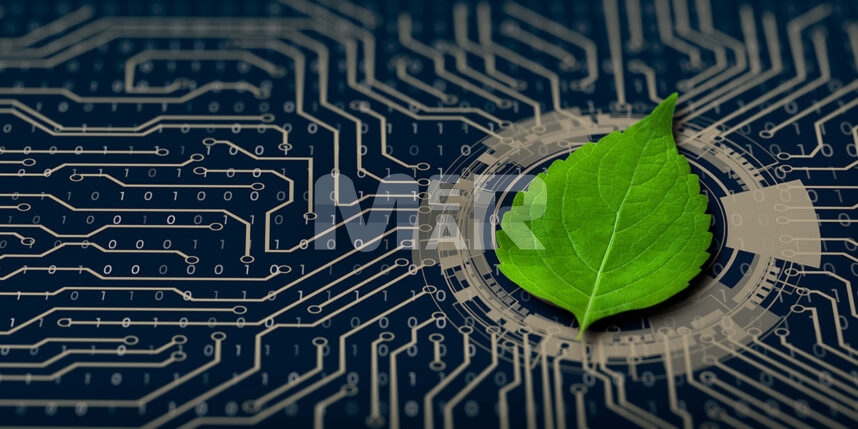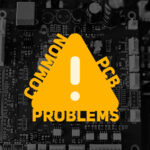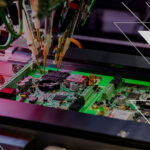Will eco-friendly printed circuit boards be the next horizon for the DFM best practices?

Industries per se have a strong role to play in impacting the environment. Unfortunately, like other industries, the electronics industry also contributes to the imbalance. Traditional PCB manufacturing, in fact, has a number of high-emission processes adding to the global electronic waste. This has its implications on the environment besides impacting human health.
The only way to address this impact is to follow environmentally friendly practices. A number of sustainable manufacturing and DFM (design for manufacturing) methods are therefore on the rise. Some of these include:
Lean Manufacturing
This involves using of concepts and processes that can remove wastes from production.
Green Manufacturing
This reduces environmental impact by the following methods:
- Reducing waste
- Recycling
- Minimizing usage of natural resources and more.
Additive Manufacturing
Essentially it involves creating 3-D objects. This method is cost effective and allows for the making of complex products efficiently.
Additive PCB printing processes involve:
- 3D Printed Electronics
- Conformal Electronics
- Aerosol, Inkjet and LaserJet Printing
As opposed to subtractive processes that lead to waste material, additive processes apply only the material needed. In case of an additive process, the design team can use the PCB design software and then simply export the finished design to the printer. They do not require etchants or photomasks.
The use of 100% conductive inks and toners do not have volatile organic compounds or etch resists. With precise printing there is little material wastage. 3D printing allows the manufacturer to 3D print the entire electronic circuit including the board, traces, and components. With PCBs having different shapes and designs, this method is extremely helpful. In fact, it allows for custom printing as per the bespoke needs of the project. Additive manufacturing can either work as:
- Single-build Process
- Post-Production Process
In the case of a single-build process both the internal circuitry as well as the external case is produced as a single assembly. In case of the post-production process, the electronic circuit needs to be integrated into the product.
Paper PCBs
Researchers have been able to produce the prototype of paper based PCBs. Along with the use of additive processes this comes with sizeable environmental benefits. Paper PCBs involve testing the mechanical properties of paper as also its capabilities to form inter-layer connections. Fortunately, tests went on to show that the flexibility of paper PCBs did not come in the way of the desired conductivity. The fact that paper PCBs have much lower costs add to the efficacy.
Besides paper, some of the other researches have shown the use of PCBs made from natural cellulose fibers, effective. The advantages of bio-composite boards stem from the fact that:
- They do not contain chemicals
- They work well even when exposed to elevated temperature or humidity
There have also been successful attempts to construct PCBs from unzippable polymeric layers such as polylactide, polycaprolactone and polyglycolide. These work for all kinds of PCBs namely rigid, flex and rigid-flex boards. Prototype testing revealed that the boards can withstand thermal cycling. Once the boards reach the end of their lifecycle, they can simply be immersed in hot water where the polymers, ink and adhesive separate. Reuse is, therefore, easy.
Biodegradability
Research into biodegradable PCB Materials has shown promising results. There is hope that traditional metal conductors can be replaced with water soluble metallic pastes. If this indeed can be implemented on a large scale, the impact on the planet can be significantly reduced.
How to Design for Sustainable Manufacturing of PCBs?
In order to design for sustainable manufacturing of PCBs, the following elements need to be kept in mind:
- It is important that eco-friendly components be selected.
- Wherever possible eco-friendly board materials need to be used.
- Small board sizes work well as they mean less material. They also consume less energy.
- Effective use of Design for Manufacturing can go a long way in efficient manufacturing as also in minimizing delays and in cost optimization.
- An important aspect of sustainable manufacturing is also prioritizing safety. This involves robust testing for manufacturing.
To Sum Up
From finding new materials that aren’t toxic while PCB assembly processes that are lead free, there is a wide range of best practices that go a long way in minimizing the harm done to the ecosystem at large.
Mer-Mar Electronics is a premier printed circuit board assembly provider. You can rely on us for end-to-end PCB assembly process and be assured of high-quality and high-performance. We are an ISO-certified company and ITAR (International Traffic in Arms Regulations) registered manufacturer who have been striving to deliver the best RoHS (Restrictions of Hazardous Substance) compliant PCB Assembly services for over 4 decades. We can be your reliable partner for the PCB assembly right from the material selection till the finish line of final PCB assembly prototypes.
If you have any requirements regarding our PCB assembly services or need urgent assistance, Request a quick PCB assembly quote.








